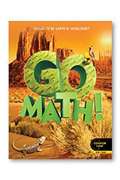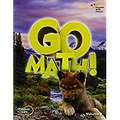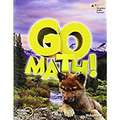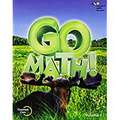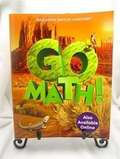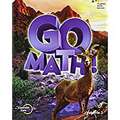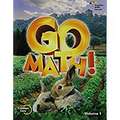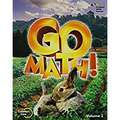- Table View
- List View
Go Math! Grade 5
by Houghton Mifflin Harcourt Publishing Company StaffMath textbook for fifth graders.
Go Math! Grade 5, Standards Practice Book for Home or School
by Houghton Mifflin HarcourtNIMAC-sourced textbook
Go Math! Student Interactive Worktext (Grade #7)
by Timothy D. Kanold Edward B. Burger Juli K. DixonGo Math! [Grade 1] Volume 1
by Edward B. Burger Juli K. Dixon Steven J. LeinwandNIMAC-sourced textbook
Go Math! [Grade 1] Volume 2
by Edward B. Burger Juli K. Dixon Steven J. LeinwandNIMAC-sourced textbook
Go Math! [Grade 3] California
by Edward B. Burger Juli K. Dixon Matthew R. LarsonNIMAC-sourced textbook
Go Math! [Grade 3] Volume 1
by Edward B. Burger Juli K. Dixon Steven J. LeinwandNIMAC-sourced textbook
Go Math! [Grade 3] Volume 1
by Edward B. Burger Juli K. Dixon Steven J. LeinwandNIMAC-sourced textbook
Go Math! [Grade 3] Volume 2
by Edward B. Burger Juli K. Dixon Steven J. LeinwandNIMAC-sourced textbook
Go Math! [Grade 4] Volume 1
by Edward B. Burger Juli K. Dixon Steven J. LeinwandNIMAC-sourced textbook
Go Math! [Grade 4] Volume 2
by Edward B. Burger Juli K. Dixon Steven J. LeinwandNIMAC-sourced textbook
Go Math! [Grade 5] Chapter 10: Convert Units of Measure
by Edward B. Burger Juli K. Dixon Steven J. LeinwandNIMAC-sourced textbook
Go Math! [Grade 5] Chapter 11: Geometry and Volume
by Edward B. Burger Juli K. Dixon Steven J. LeinwandNIMAC-sourced textbook
Go Math! [Grade 5] Chapter 3: Add and Subtract Decimals
by Edward B. Burger Juli K. Dixon Steven J. LeinwandNIMAC-sourced textbook
Go Math! [Grade 5] Chapter 4: Multiply Decimals
by Edward B. Burger Juli K. Dixon Steven J. LeinwandNIMAC-sourced textbook
Go Math! [Grade 5] Chapter 6: Add and Subtract Fractions with Unlike Denominators
by Edward B. Burger Juli K. Dixon Steven J. LeinwandNIMAC-sourced textbook
Go Math! [Grade 5] Chapter 7: Multiply Fractions
by Edward B. Burger Juli K. Dixon Steven J. LeinwandNIMAC-sourced textbook
Go Math! [Grade 6] Volume 2
by Edward B. Burger Juli K. Dixon Steven J. LeinwandNIMAC-sourced textbook
Go Math! [Grade K] Volume 1
by Edward B. Burger Juli K. Dixon Steven J. LeinwandNIMAC-sourced textbook
Go Math! [Grade K] Volume 2
by Edward B. Burger Juli K. Dixon Steven J. LeinwandNIMAC-sourced textbook
